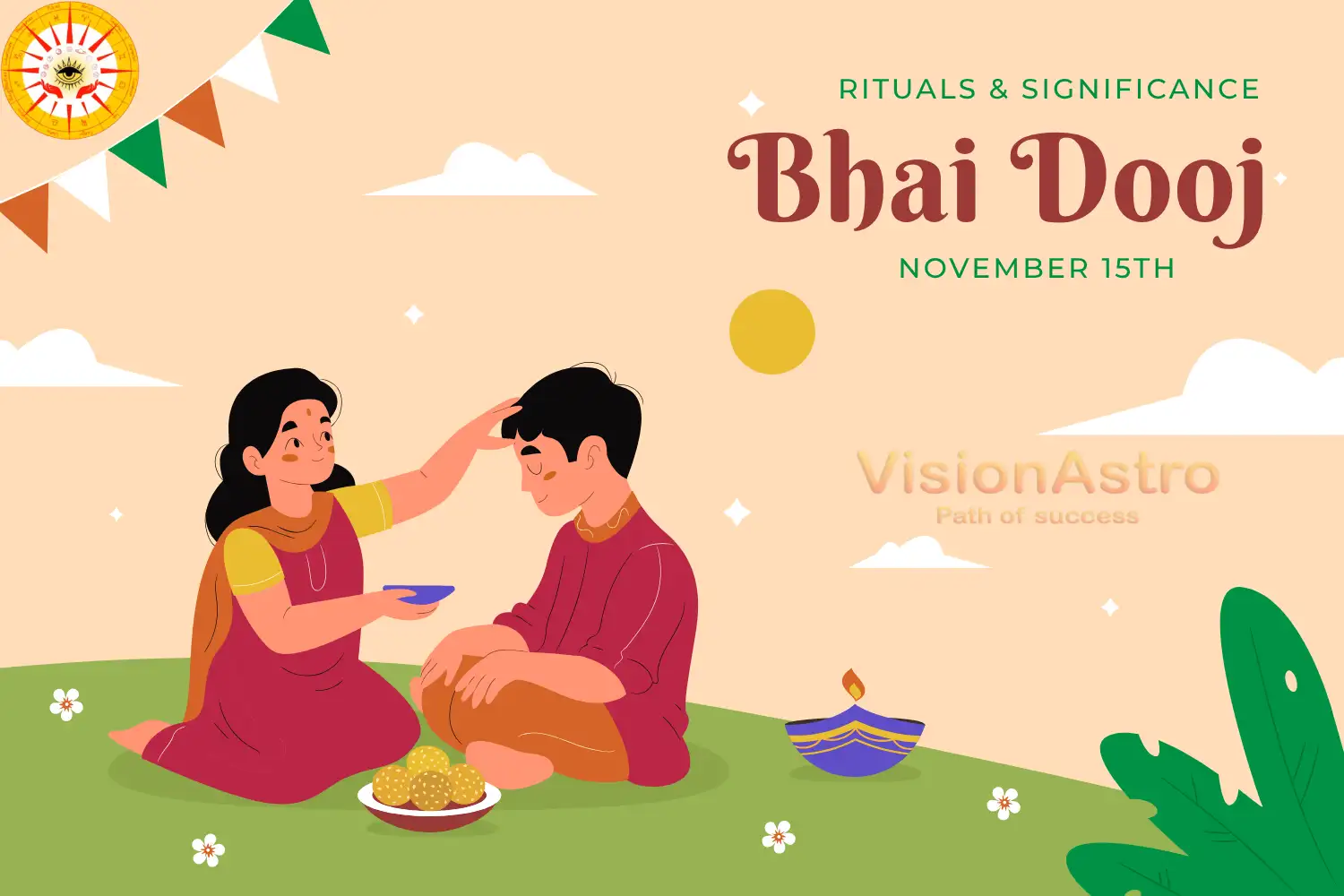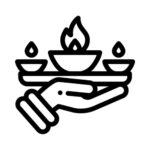Rituals of Bhai Dooj Celebration

Bhai-Dooj: Strengthening the Unbreakable Bond Between Siblings
Introduction
Bhai-Dooj, also known as Bhav Bij, Bhai Pota, or Bhai Teeka in various regions, is a heartwarming festival that celebrates the unique bond between brothers and sisters. Rooted in Hindu mythology, this occasion holds deep cultural significance. In this article, we explore the story behind Bhai-Dooj, its rituals, and its relevance in today’s world.
The Mythical Origins
Long ago, in a time when the gods walked the earth, Surya, the Sun God, married a beautiful woman named Samjna. Their union blessed them with twin children, a sister named Varni and a brother named Yama. However, Samjna decided to return to Earth, leaving her shadow, Chaya, behind. Unfortunately, Chaya turned out to be evil, mistreating the children and even having her own offspring with Surya.
Chaya’s malevolence led her to instruct Surya to send Varni and Yama to Earth. Yama took on the role of the Lord of Death, while Varni became the sacred Yamuna River. Although Varni lived a happy life with her prince, she always yearned for her twin brother, and Yama, too, missed his beloved sister.
The Reunion
Their heartfelt reunion took place two days after Diwali, on Shukla Paksha Dwitiya in the Hindu calendar month of Kartik. Varni, eager to welcome her brother, prepared a grand feast (bhog) for him. Touched by her hospitality, Yama granted her a special boon. Varni asked for his blessings to ensure the well-being and prosperity of all brothers who visit their sisters on this day.
This day, known as Bhai-Dooj, falls on the fifth and final day of Diwali. It is celebrated with great enthusiasm and reverence by both brothers and sisters. It symbolizes the unbreakable bond of love and protection. Sisters offer prayers to Lord Yama for their brother’s safety and prosperity.
Rituals and Traditions
1. Puja Thali Preparation
Sisters begin by preparing a Puja Thali that typically includes teeka, Roli, rice grains, batasha, sweets, and a coconut.
2. Teeka Application
After performing prayers to Lord Ganesha and Lord Yama, sisters apply the sacred kumkum teeka on their brother’s forehead. This ritual signifies the sister’s wishes for her brother’s well-being.
3. Fasting
In some families, sisters observe a fast until the teeka is applied. It is a gesture of their dedication and love for their brothers.
4. Prayers for Longevity
Sisters offer heartfelt prayers to Lord Yama, seeking his blessings for their brother’s good health and a long life.
The Bhai Dooj Mantra
During the Bhai-Dooj event, sisters recite the following mantra:
“Bhratus tabaa grajaataaham, Bhunksa bhaktamidam shuvam Preetaye yama raajasya, Yamunaah Visheshatah.”
This Sanskrit Shloka translates to, “I am your beloved sister; please accept and partake in this sacred rice, allowing me to appease Lord Yama and Devi Yamuna.“
Puja of God Chitragupta
For the Kyastha community, Bhai-Dooj is also known as Yam Dwitiya. On this day, they pay respects to Lord Chitragupta, the keeper of records of their deeds. It is believed that Chitragupta’s judgment determines whether a person is sent to heaven or hell. Devotees offer prayers to paper and pen as symbols of reverence to the Lord.
Bhai-Dooj Around the World
Bhai-Dooj goes by different names in various regions:
- Bhav Bij: Celebrated in Maharashtra.
- Bhai Pota: Observed in Bengal and other eastern states.
- Bhai Teeka: Celebrated in Nepal.
Conclusion
Bhai-Dooj, a celebration of the eternal bond between siblings, is a festival that strengthens family ties and carries forward ancient traditions. The rituals and customs associated with this occasion foster love and protection between brothers and sisters, keeping their relationship evergreen.
FAQs
1. What is the significance of Bhai-Dooj?
Bhai-Dooj is a festival that celebrates the bond between brothers and sisters. It involves sisters praying for the well-being of their brothers and performing rituals to ensure their prosperity and longevity.
2. When does Bhai-Dooj occur?
Bhai-Dooj falls on the fifth day of Diwali, two days after the main Diwali festival.
In the year 2023, Bhai-Dooj occurs on Wednesday, 15th November 2023
3. What is the Bhai-Dooj mantra?
The Bhai-Dooj mantra is a Sanskrit Shloka that sisters recite while applying the teeka to their brothers. It seeks the blessings of Lord Yama and Devi Yamuna for the well-being of the brother.
4. How do Kyastha community members celebrate Bhai-Dooj?
The Kyastha community celebrates Bhai-Dooj by offering prayers to Lord Chitragupta, the keeper of deeds, using paper and pen as symbols of reverence.
5. What are the alternate names for Bhai-Dooj in different regions?
In different regions, Bhai-Dooj is known as Bhav Bij in Maharashtra, Bhai Pota in Bengal and eastern states, and Bhai Teeka in Nepal.











